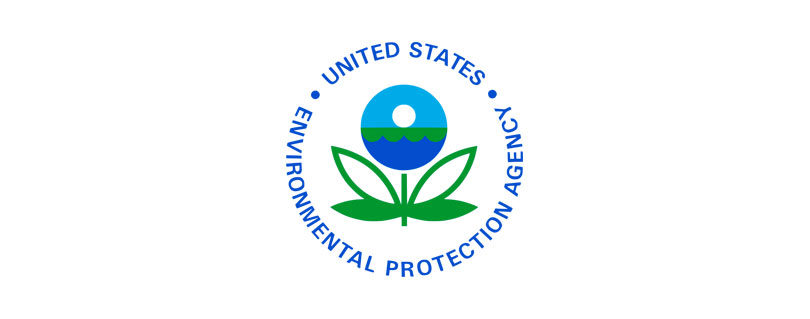Biden-Harris Administration Announces $225 million to Improve Drinking Water and Wastewater Infrastructure for Tribes and Alaska Native Villages
Publilshed by the U.S. Environmental Protection Agency (EPA)
WASHINGTON – Today, May 22, the U.S. Environmental Protection Agency, announced over $225 million in funding to improve access to safe and reliable drinking water and wastewater services for American Indian Tribes and Alaska Native Villages. Through President Biden’s Investing in America Agenda, EPA is able to provide one of the largest annual investments in water infrastructure funding to Tribes to help them advance public health and environmental protections, such as identifying and replacing lead service lines, or addressing harmful emerging contaminants in drinking water and wastewater, like PFAS.
“The Biden-Harris Administration is committed to ensuring that Tribes across the country have access to clean and safe water, and thanks to the Investing in America Agenda, we are making more progress than ever before,” said Acting Assistant Administrator for Water Bruno Pigott. “With this announcement, Tribes will be able to access funding for critical public health improvements ranging from lead service line replacement to get the lead out of drinking water to installation of wastewater infrastructure to protect public health and improve water quality in lakes, rivers, streams and oceans.”
The FY 2024 funding will be administered through the following programs:
- $69.4 million in Clean Water Indian Set-Aside through the Bipartisan Infrastructure Law and annual appropriation funds.
- $133.8 million in Drinking Water Infrastructure Grants Tribal Set-Aside through the Bipartisan Infrastructure Law and annual appropriation funds.
- $19.3 million in Emerging Contaminants in Small or Disadvantaged Communities Tribal Grant Program through Bipartisan Infrastructure Law funds.
- $2.85 million in Small, Underserved, and Disadvantaged Communities Tribal Grant Program through annual appropriation funds.
In the past, EPA’s funding to Tribes and Alaska Native Villages have been used for everything from establishing clean, safe wastewater treatment to pesticide reduction to waterways where fish consumption is critical to establishing backup power sources for wastewater systems after extreme weather like the wildfires. And with today’s announcement, Tribes across the country will be able to apply for funding to do more critical water infrastructure work.
Some examples of Tribal Investments made possible by President Biden’s Investing in America Agenda include:
- $1,586,000 was awarded the Tohono O’odham Nation to install a new arsenic treatment facility for groundwater wells on the Sells public water system. The system was experiencing rising arsenic levels that are close to the maximum containment level (MCL) of 10 parts per billion. The project will serve 1,014 homes in the Sells and Big Fields communities.
- The San Carlos Apache Tribe received $985,778 to construct two new groundwater wells to supply the Bylas community public water system, whose current water source is impacted by E. coli contamination. Construction of the new wells was completed in early 2024.
- The $1,787,500 forgivable loan that the Fallon-Paiute-Shoshone Tribe in Nevada received to continue a project to enhance an existing wastewater treatment lagoon and install a lift station resulting in improved sanitation and environmental health.
- The $2 million for the Clearwater River, Nez Perce Reservation in Idaho to help ensure salmon is healthy for consumption. Thanks to the BIL funding through the Columbia River Basin Restoration Program, the Nez Perce Tribe will use permanent and semi-permanent practices to reduce pesticides that infiltrate waterways in the Clearwater River watershed. Reducing pesticides in waterways benefits all living things that rely on the waters of the Columbia River Basin.
- The $600,000 investment to help eight tribes in California fund the sighting and installation of back-up power generators for their wastewater treatment systems. After some of the California wildfires these wastewater systems lost power and this investment will help ensure critical infrastructure is available during extreme weather.
- The $989,000 to help the Muscogee (Creek) Nation in Oklahoma address the Reservation’s overloaded wastewater treatment lagoon system. Upgrades will help properly treat wastewater for over 200 homes and help resolve problems with discharges of raw sewage.
Learn more about EPA’s Tribal Water program, EPA’s Tribal Drinking Water Funding Programs, and EPA’s Clean Water Indian Set-Aside Program.
Background
The Clean Water Indian Set-Aside program was established under the 1987 amendments to the Clean Water Act and provides funding for wastewater infrastructure to American Indian Tribes and Alaska Native Villages. Funds may be used for planning, design, and construction of wastewater collection and treatment systems.
The Drinking Water Infrastructure Grants Tribal Set Aside is a longstanding program funded from the Drinking Water State Revolving Fund that provides direct EPA support for Tribal water infrastructure improvements. The Small, Underserved, and Disadvantaged Communities Tribal Grant program was created under the Water Infrastructure Improvements for the Nation (WIIN) Act and provides support for Tribal drinking water. The Bipartisan Infrastructure Law builds on successful programs like the WIIN Act’s Grant Programs and the Drinking Water Infrastructure Grants Tribal Set Aside to bring additional public health protections and drinking water improvements to more Tribal communities across the country.
EPA has released guidance on the implementation of Clean Water and Drinking Water Indian Set-Aside funding provided through the Bipartisan Infrastructure Law to prioritize public health projects including addressing emerging contaminants and lead service line replacement projects.
The Alaska Rural and Native Villages (ANV) Grant Program also provides funding for the construction of high priority drinking water and wastewater facilities in rural Alaska as well as training, technical assistance and educational programs in support of sustainable water systems. The FY 2024 allocation for ANV is $39 million.
Infrastructure projects for these programs are primarily implemented in partnership with the Indian Health Service, who are partners with EPA in the Tribal Infrastructure Task Force (ITF).
Read the full article at: https://www.epa.gov/newsreleases/biden-harris-administration-announces-225-million-improve-drinking-water-and



